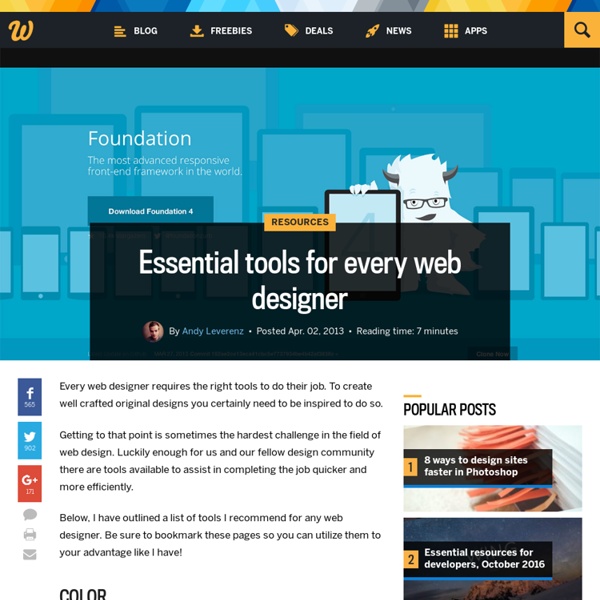Web Design For Dummies Cheat Sheet
Cheat Sheet Web design can be technically demanding, but don't underestimate the importance of the visual aspects. How your Web pages look — whether you're presenting pure information or adding navigation tools — has a great influence on how long visitors stay on your Web pages. So it pays to pay attention to design elements to achieve graphic good taste. Basic Web Design Tips When designing web pages, you need to think visually.
Inline scripts: sometimes the web is just screwed up : Algorithms for the masses - julian m bucknall
I don’t know about you, but one of my favorite commands in the browser is “View Page Source”, especially on a site that’s modern, visually attractive, or shows off some clever interactions. After all, I’m a developer: I like to find out how things work so I can, if I want to, replicate on my own web sites. Some web pages though are really nasty when you look at their source. And one of the places they excel at nastiness is in their use of inline scripts. Now, don’t get me wrong, I’m not particularly objecting to inline scripts: sometimes they’re the biz when you just have some minor bit of JavaScript to execute, so minor it doesn’t seem efficient to create a brand new JS file and add the external script tag to the HTML on the page.
85 Top Responsive Web Design Tools
As the mobile market continues to grow, demand for responsive website design intensifies. This has introduced a new set of tools, 10 of which we've listed below, to help lay out, design, code and plan a responsive website. While some may overlap, each deserves a spot on the list; when combined, they can help you craft a website that provides an optimal viewing experience for users on all devices. (Along with each recommendation is a list of alternative tools that may be useful.) If you are a designer or developer, what are some of the indispensable tools in your responsive toolbox?
Pixel Perfect Precision Handbook
Almost a year and a half after the first release of the PPP handbook – we still love pixels. It seems like you do too as we’ve had some great feedback. We’ve been working hard to make it bigger, better, and more useful.
s Den - Tweak Touch Behavior in Internet Explorer with User Style Sheets
Apr 5, 2013 As touch becomes a more and more prevalent means of interacting with PCs as well as phones and tablets (I'm typing this on a Lenovo Carbon X1 Touch laptop), developers should be aware of how to create touch-friendly sites and apps that help users make the most of touch-enabled devices. If you're building apps for the Windows Store, there's good guidance available on touch interaction design on the Windows Store developer center. There's also some guidance available for building touch-friendly sites in Internet Explorer 10. One interesting piece of that discussion is the –ms-touch-action CSS property, which defines the default behavior for the browser's response to touch. If you're a developer, it's easy enough to add an appropriate CSS style rule to prevent double-tap-zoom on the canvas element in your game, like so:
How to Approach a Responsive Design
So I’ve got a confession to make: When we started working on the new Boston Globe website, we had never designed a responsive site before. This shouldn’t come as some huge shock. I mean, raise your hand if you’d built a full responsive site back in November 2010. (You can put your hand down now, Mr. Marcotte, that was rhetorical.)
Choose a website builder: 12 top tools
After hours of looking online for some web design inspiration, you're ready to get started with a new site and now need a website builder. There are a multitude to choose from, so which is the best? Well, for a start, you'll be looking for a website builder that can create your website in the latest version of HTML, HTML5.
Crocodoc
We recently launched a preview of Crocodoc’s newest document to HTML converter. If you haven’t checked it out yet, go play with our preview and see how we’re converting the pages of your documents to embeddable SVG and HTML. What does the new converter mean to those of you building web applications using Crocodoc? Simple: your documents will load faster, look sharper, and be much easier to customize. Our preview page is full of interactive examples designed to help provide inspiration and showcase what is possible with the new Crocodoc: everything from a 3D page demo, showing off the many layers in a document, to a magnified view of an uploaded document, and a thumbnail that expands into a full-size inline document. For this post, I’d like to focus on the 3D demo.



